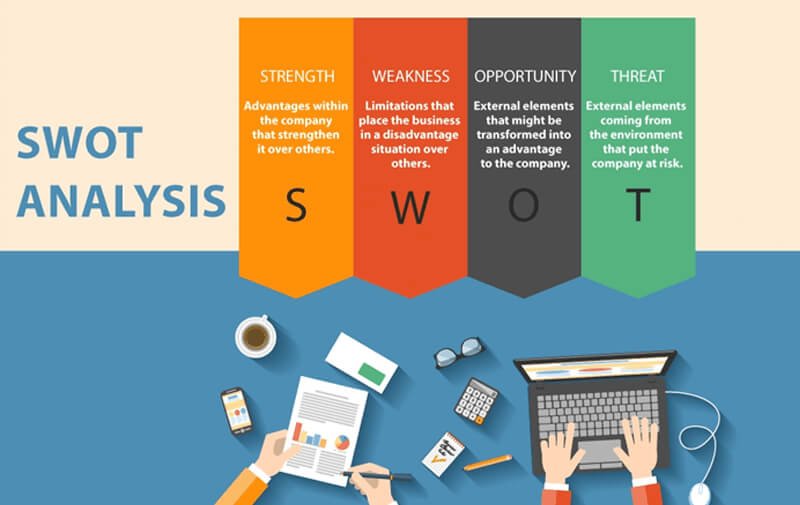The efforts needed to launch a new venture can seem daunting. Starting a small business involves strategic planning, making key financial decisions and completing a series of sales and marketing activities. It can be both an exciting, and yet challenging journey.
Depending on the industry, the challenges businesses face can be very different. However, some basics are still universal. Before embarking on the entrepreneurial journey, here are a few important steps one can follow to launch a small business successfully.
Understand The Market
It is imperative to understand the target market. Growing a small business without understanding the competitors is risky. Market research can prepare one for changing markets and prevent the business being left behind by the competition. It involves the collection and analysis of information about the market, including the customers and competitors.
The primary reason behind why new businesses fail is due to inadequate market research. Therefore, failing to include this step in the business plan will do so at one’s peril.
While doing market research, one should take into consideration the market size, market entry barriers and any other market restrictions, laws, regulations, future growth prospects, etc. It is also important to study about the competitors. Doing a SWOT (Strength, Weakness, Opportunity, Threats) can be a useful way to assess where a business stands in the market in relation to its competitors. What makes SWOT particularly valuable is that it can help businesses uncover opportunities that they are well-placed to exploit. And by highlighting and understanding the weaknesses of the business, one can manage and remove threats that would otherwise catch them by surprise.

Moreover, by looking at the business and its competitors using the SWOT framework, one can start to craft a detailed strategy that helps differentiate the business from its competitors, so that one can compete successfully in the market.
Identify The Goals
Setting goals and objectives for a small business is essential to determining its strategy for growth and in implementing its organizational policies and procedures. When one sets strategic goals, one will know exactly what achievements to aim for, and can quickly identify the milestones when they reach them. Strategic goals can help a small business prioritize its daily tasks so that it always moves in a purposeful direction. It is very challenging to achieve success without first interpreting what the business goals are, especially for a small business.
Businesses should make a list of the short-term and long-term goals. As one is launching a new business, initially, the primary focus should be on short-term goals. As the business progresses, one can proceed to determine the long-term objectives accurately.
Develop And Test The Products Or Services
Product or services are the lifelines of any business organization. Investing in their development is not an option – it is crucial to business growth and profitability. The successful development and sales of any business products or services are inter-related to the profits and survivability of the company. By properly testing the products and services, one will have an idea of how the products or services will perform and get the business the maximum profits. It will also ensure the quality, as well as, consistency. Achieving distinct product superiority in a category is the surest way to build market share, induce customer loyalty, and boost profitability. Better products also tend to command higher prices and be more responsive to advertising investments.
Create A Marketing Plan
Businesses that are successful invariably start with a marketing plan. Large companies have plans with hundreds of pages while small companies can get by with a half-dozen sheets. Before launching a business, it is important to make a strategic marketing plan to promote the business and its offerings. Unlike a business plan, a marketing plan concentrates on winning and keeping customers: it is strategic and includes numbers, facts, and objectives. One must know where and how to promote the business and which media is best to be used.
In a marketing plan, it is important for a business to begin with a snapshot of the company’s current situation called a “situation analysis.” At the same time, one must also be quick in identifying its target audience and marketing goals. This information can help in setting the direction of the marketing strategy of the business.
A detailed marketing plan will spell out all the available tools and tactics one can use to achieve the marketing goals. It targets prospects at all stages of the sales cycle. Some marketing tactics, such as advertising, public relations, direct marketing and digital marketing, are great for reaching cold prospects. Warm prospects, on the other hand, will respond best to permission-based email, loyalty programs, and customer appreciation events, among others.
Once the strategies have been identified for each channel, one will then need to figure out their budgets and how to effectively execute the marketing plan.
Determine The Sales Strategy

The way consumers make purchasing decisions is constantly changing, so it is vital to re-evaluate the sales strategy continually. Selling any products or services can be a fine line to walk: one have to achieve that perfect balance between being persuasive but not annoying at the same time.
At the end of the day, the total revenue of any company mainly depends on the total sales of the products or services. So a proper and strategic sales planning is essential for the success of any business. A perfect sales strategy will help the business to recognize the potential customers. It will also contribute to knowing what makes the products or services unique from others and why consumers should buy from them.
A successful sales strategy conveys this so that the sales force invests time targeting the right customers at the right time, increasing the sales growth for the business.
Measure The Results
One must know where they stand in the business market. It is important to know whether the business is performing healthily, or if there is a need for any improvements. By measuring the results, one will come to understand the business more. If a plan was crafted out earlier, one should make a comparison of the results with the goals set. Look for where the differences are the greatest. Look for where the expenses are tied to the sales. Look for the bright spots where sales are good. Look at how the numbers are supposed to come together, and not just how they do not. By measuring the business results, one will be able to make important and effective data-driven decisions that can improve the company’s results in the future.
Keep The Momentum Going

Launching a business successfully does not provide one with complete success. It is just a starting of the long-term business process. After a successful launch, the business must consider taking various steps to improve itself continuously. And this is especially true for a small business, as it is vulnerable to the extreme competition from fellow small businesses and larger enterprises. The need to constantly tinker with the business never ends. The most important factor for the success of every business organization is to remain updated with the latest business trends and to get feedback from the market. Evolution is needed for the ever-changing business environment. Only then, one can establish a name in the business world, or risk eliminated in the competitive environment.
You have always got to be thinking about how you can tweak whatever you have to make it even better.
David Rush (Co-founder and CEO of Earshot)





